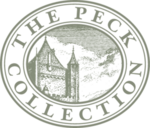Choose a background colour
Guillam Dubois, Dutch, 1623/25-1653: Cottages Along a Wooded Road, c. 1647
Black and red chalk on paper; framing lines in brown ink.
5 1⁄4 × 7 7⁄16 in. (13.4 × 18.9 cm)
None.
- Chain Lines:
- Vertical, 22 – 24 mm.
- Watermark:
- None.
- Provenance:
Jacob de Vos Sr., 1735 – 1833, Amsterdam; his sale, De Vries & Roos, Amsterdam, 30 – 31 October 1833; J. A. G. Weigel, Leipzig; his sale, H. G. Gutekunst, Stuttgart, 8 May 1883; Belmon Collection, Amsterdam, 1967; Hans van Leeuwen, 1911 – 2010, Amerongen (Lugt 2799a, stamp on mount); his sale, Christie’s, Amsterdam, 24 November 1992, lot 56; Sheldon and Leena Peck, Boston (Lugt 3847); gift to the Ackland Art Museum, inv. no. 2017.1.21
- Literature/Exhibitions:
Bonn, Saarbrücken & Bochum 1968 – 69, no. 38; Giltaij 1977, 152, fi g. 11; Utrecht 1978, no. 18; F. Robinson in Chapel Hill, Ithaca & Worcester 1999 – 2001, 44 – 45, no. 5.
- Ackland Catalogue:
- 2017.1.21
Little is known about the Haarlem painter Guillam Du Bois (or Dubois) despite the abundant charm of his landscape drawings, which are relatively scarce today.1
Archival research has yielded various birth and death dates for the artist, a difficulty exacerbated by the various other individuals with a similar name in Haarlem at the time. It appears that he probably did not, in the end, live a very long life.2
Du Bois joined the Haarlem guild in 1646, and his earliest paintings date to 1644. We know that he traveled to Cologne in the years 1652 – 53 in the company of Vincent Laurensz van der Vinne (1628 – 1702), who kept a journal of the trip, and Dirck Helmbreker (1633 – 1696).3
Unfortunately, Van der Vinne left us no record of Du Bois as an artist or person, merely recording when he joined and left the group of traveling artists. All trace of him is lost after 1653, and it is entirely possible that he perished shortly thereafter, perhaps even on his solo journey from Cologne back to Haarlem.4
Of the approximately three dozen drawings by Du Bois currently known, the two in the Peck Collection are arguably among his finest. For the present work, he appears to have chosen a Dutch village in the countryside for his subject, one similar to any number found in the environs of Haarlem and which proved of enduring interest to landscape artists from the beginning of the century onward. To capture the rustic grace of the dwellings nestled within their densely foliate surroundings, Du Bois carefully controlled the pressure and density of his black chalk lines to suggest multiple layers of depth. His lively corkscrew-like tree branches, a hallmark of his style, animate the image. In a few places he created tone through stumping (rubbing friable passages of chalk), which can be seen with particularly good effect in the thatched roof of the cottage in the foreground.
Distinctive, too, is his judicious application of red chalk, which he occasionally added to his drawings.5
It sets off the texture of brick for the chimney and wall of the cottage at left, and wonderfully demarcates the roof of the structure behind a row of trees at right by using short, carefully placed strokes between the branches of the trees. While his distinctive style in combining black and red chalk in his landscape drawings is entirely his own, he may have been inspired by the precedent of Willem Buytewech (1591/92 – 1624), who worked in Haarlem briefly a generation earlier and made a number of notable black chalk landscape drawings with touches of red chalk as well.6
In his study of the artist’s drawings, Jeroen Giltaij dated the present sheet to circa 1647.7
Developing a convincing chronology of Du Bois’s drawings, however, is nearly impossible given that his entire oeuvre only spans a decade, and that so few of his sheets relate to dated paintings. Furthermore, only two of his drawings bear dates, those in Rotterdam and London from 1646 and 1647, and thus toward the outset of his career.8
The more fully realized integration of style and technique in the present work suggests that it was probably made somewhat later.
End Notes
For Du Bois’s drawings, see Giltaij 1977, recording about thirty works. Several more attributed to him have appeared in the interim, various in quality and in security of attribution.
I. van Thiel-Stroman in Biesboer et al. 2006, 112 – 13. Du Bois was probably born in either 1623 or 1625 to one of two sets of parents who gave birth to a child of that name in Haarlem, and not in 1610 as previously thought. His death date had long been thought to be 1680 but Van Thiel-Stroman demonstrated that this was based on the death record of a different Guillam Du Bois.
For the republication and study of Van der Vinne’s journal, see Sliggers 1979.
I. van Thiel-Stroman in Biesboer et al. 2006, 112.
Touches of red chalk can also be found in the other drawing by Du Bois in the Peck Collection in the Ackland Art Museum (inv. no. 2017.1.22), as well as drawings in the Rijksmuseum, Amsterdam (inv. no. rp-t-1976-115) and the British Museum, London (inv. no. 1836,0811.797).
See, for example, the drawing by Buytewech, Meadow with a Shepherd and Cows, c. 1617, National Gallery of Art, Washington (inv. no. 1977.61.1).
Giltaij 1977, 154 (when the drawing was still in the collection of Hans van Leeuwen, Utrecht, illustrated as fi g. 11 on p. 152). Giltaij argues for this date on the basis of paintings from 1646 to 1647 that likewise treat village dwellings.
Museum Boijmans Van Beuningen, Rotterdam (inv. no. MB 1975/T33), dated 1646; and British Museum, London (inv. no. 1836,0811.796), signed and dated 1647. The latter work is in fact the only signed drawing by Du Bois, for which see C. Brown in London 1986, no. 95a.
